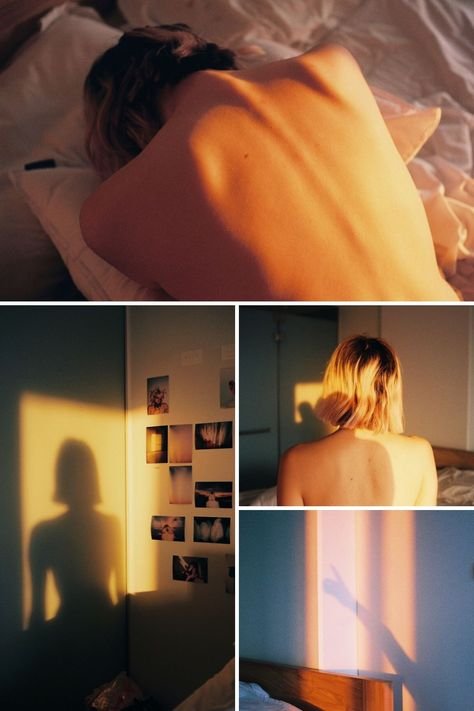Lighting Up the Film Industry
The intentional usage of lighting in the film industry is a vital component in producing an effective and meaningful film.
Noa Chamberlin, Arts Staff Writer
There are many components that go into making a great film; the writing, actors, setting, plot and script are all elements of filmmaking that audiences pay attention to. However, it’s the lighting that shows an audience narrative and continues the story along in an impactful way. It may not seem like it but, according to Colin Darden, the CEO of D&O Lighting, “if you see a film that is poorly lit, it won’t matter how good the plot is” (Darden, 2020).
Three-point lighting is a widely used technique among filmmakers and cinematographers all over the world, as it is the standard form of professional lighting in video production (Hoyt, 2022). It involves three different light sources all placed in different locations in order to control how light and shadow fall on a subject, creating different moods and narratives.
The three lights are called the key light, fill light and backlight. The key light is the primary source of light intensity, typically positioned slightly off to the side of the camera and the front of the subject, creating the mood of the scene. The fill light mirrors the key light on the opposite side of the camera and fills in the shadows that the key light creates on a subject, bringing out details in the darkness. Completing the light set up, the backlight shines on the subject from behind, creating separation between the subject and the background.
Three-point lighting is just the basic form of lighting a scene in an impactful way, but creating an effectively lit scene takes a lot of work and technique from the director and cinematographer.
Lighting is a vital component of making a movie, as it has the power to reflect the psychology of the characters. The amount, size, color and harshness of light surrounding a character can be adjusted to match their emotions and convey a series of elements to the audience. Lighting supports and has the power to define the genre of the film.
Beyond the logistics of lighting a scene in an impactful way, much of the lighting has the power to speak to audiences about what is going on in the scene or what is to come in the future (Weaver, 2016). Light brings many characteristics to the set and helps to set the scene; bright and colorful lighting brings a cheerful mood, whereas dark and shadowy images invoke feelings of mystery and foreboding.
In “The Dark Knight,” a Batman film starring Christian Bale and Heath Ledger, there is an astonishing use of lighting that contrasts heavily from day to night. Low-key lighting, a technique used to emphasize shadows, is the primary technique used for this movie; there are so many key scenes where the low-key lighting does so much for the actual storytelling, sometimes feeling like the mood was set more by the lighting than the dialogue or action (Acachong, 2014).
On the other hand, in the recent version of the film “Little Women,” there is an impeccable use of warm vs. cold lighting. When scenes are shown to represent the past and the warmth of youth, a color scheme that is most similar to a fireplace is put in place. Such forms of lighting technique often take on the tones of orange, yellow or red (Tech, 2020). As a result, our frequent associations of warmth to comfort and coziness also reflect on the looks constructed, and in the film “Little Women,” the warmth of youth is conveyed and brought out in the lighting technique.
In contrast, when the film flashes to the present, there is cooler lighting put in place that leads the audience to become aware of some dark essence that haunts the characters. Solid lighting is indicative of a “lower” temperature of color, or one that takes on color tones of blue, green or gray (Tech, 2020). There is an illusion of sadness when cooler lighting is put in place throughout the film and can cause the audience to feel a certain way, all stemming from the utilization of lighting techniques and coloring.
Lighting serves as pictorial beauty and aesthetic pleasure; depth, perspective and third-dimensional illusion are all accomplished through the precision of lighting in a film. It sculpts the scene, using it to hide or reveal key elements of the visual story, tying together the narrative and the visual.
Without attention to lighting, the film industry would be absent of so much emotion and narrative that is only achieved through certain lighting elements. Even though we as audience members cannot see what is going on behind the scenes, certain light is being utilized to subconsciously allude to conclusions about the character or scene portrayed. Light is one of the most vital components of making a successful film as it brightens up the film industry.
Sources:
Acachong. (2014, September 26). The dark knight an example of phenomenal lighting. andrewsfilms.
Hoyt, E. (2022, February). Lighting. Communication Arts 155. The University of Wisconsin-Madison; Villas Hall.
What is three-point lighting? learn about the lighting technique and tips for the best three-point lighting setups - 2022. (2021, August 26). MasterClass.
Tech, J. (2020, August 6). How lighting affects the mood of films. Medium.
Weaver, C. (2013, January 28). Lighting Tutorials, Tips & Tricks. Through The Lens Film School
Darden, C. (2020, March 13). The importance of lighting in film production. D&O Lighting.

